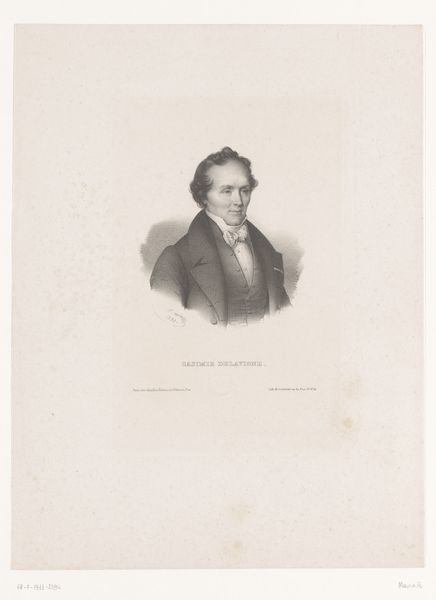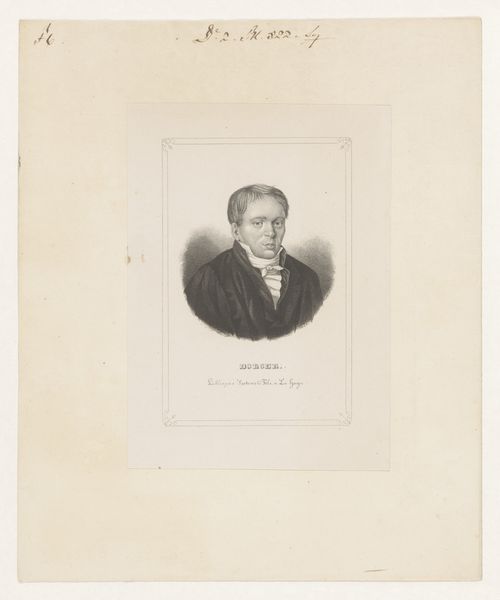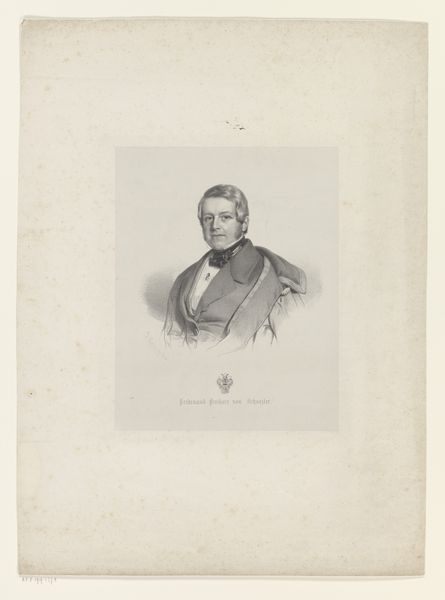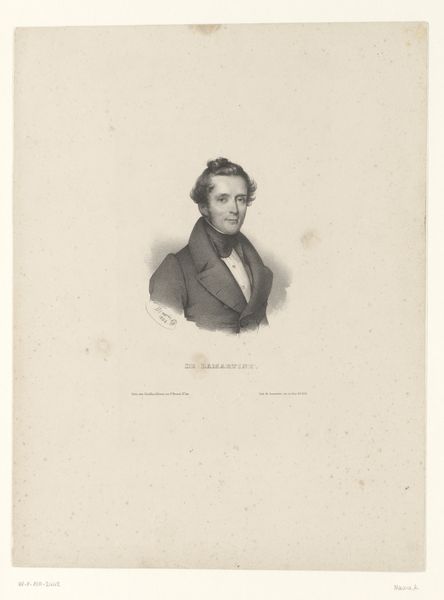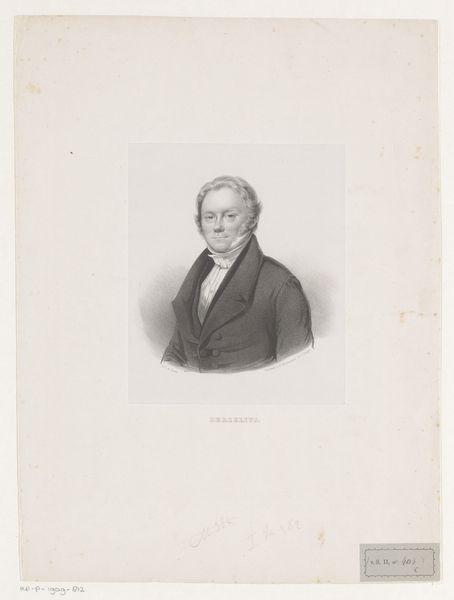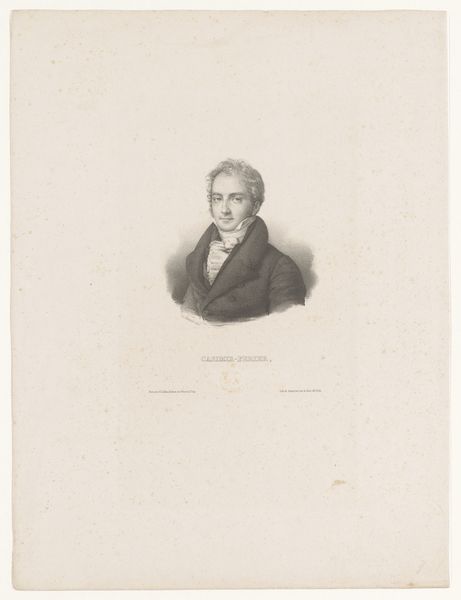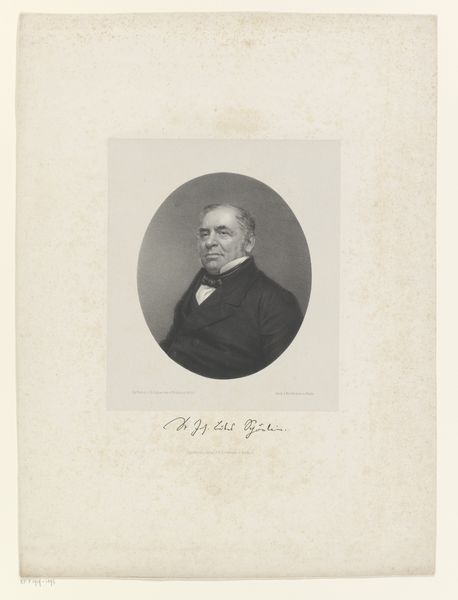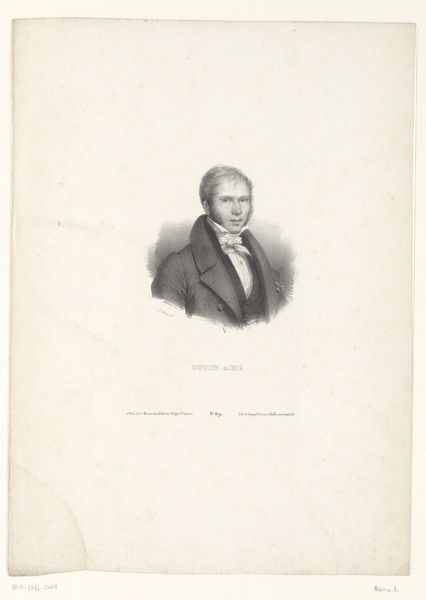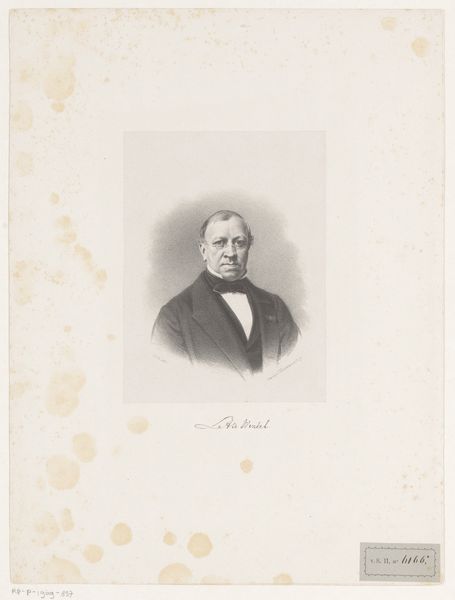
engraving
#
portrait
#
pencil drawn
#
old engraving style
#
history-painting
#
academic-art
#
engraving
#
realism
Dimensions: height 180 mm, width 164 mm
Copyright: Rijks Museum: Open Domain
Hans Rudolf Rahn created this portrait of Frédéric Dubois de Montpéreux using lithography, a printmaking process that democratized image production in the 19th century. Lithography involves drawing with a greasy crayon on a stone or metal plate, then treating it with chemicals so that ink adheres only to the drawn areas. The resulting image is then printed, allowing for relatively quick and inexpensive reproduction, compared to techniques like engraving. The fine lines and subtle shading visible here are characteristic of the process. Lithography enabled wider access to imagery, fueling the growth of advertising, journalism, and even portraiture, as seen here. What's compelling is the way the mechanical nature of lithography intersects with the artist's hand. Rahn skillfully uses the medium to capture de Montpéreux's likeness and convey his social standing. Ultimately, this portrait isn't just about the man it depicts, but also the social and technological forces at play during its creation. By considering the materials and methods used, we gain a richer understanding of the artwork's meaning and place in history.
Comments
No comments
Be the first to comment and join the conversation on the ultimate creative platform.
